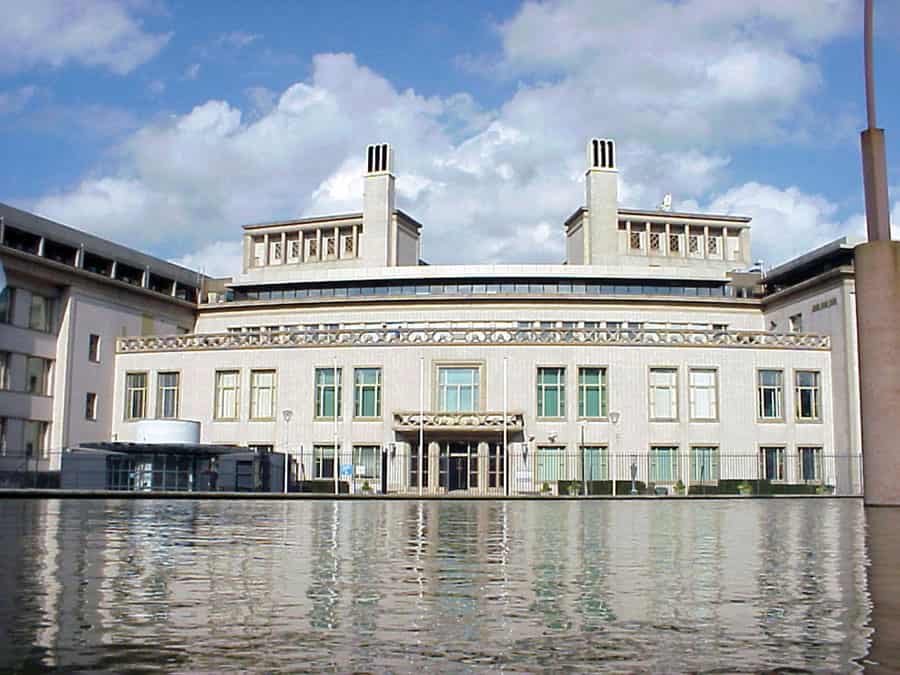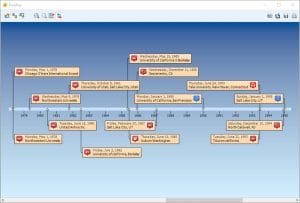Text Analytics in Crime Analysis and International Justice May 8, 2020 - Blogs on Text Analytics

Dr Uwe Ewald
Director of the International Justice Analysis Forum
Uwe Ewald is the director of the International Justice Analysis Forum. IJA-Forum offers support in evidentiary analysis required for complex (international) crime cases, based on its expert network and roster of analysts and researchers. He started using qualitative data analysis software QDA Miner and the content analysis and text mining software WordStat in 2006 and is a trainer and consultant for the software.
Please tell us a bit about yourself.
I studied law at the Humboldt University in Berlin, where I received a doctorate in 1983. I then worked as a criminologist in teaching and research at various universities and research institutions, including the Free University of Berlin (Germany), the School of Criminology at the Simon Fraser University Vancouver (Canada), the Max Planck Institute for Foreign and International Criminal Law in Freiburg i.Br. and the Ruhr University Bochum (Germany).
I was active as a defense lawyer in large-scale proceedings of the GDR government crimes (cases in so-called “wall shooter proceedings”, GDR state doping, obstruction of justice).
In 2002 I began working as a Strategic Crime Analyst at the United Nations International Criminal Tribunal for the former Yugoslavia in The Hague. At the Yugoslavia Tribunal, I worked intensively on the computer-
assisted analysis of mass digital evidence. This war crimes analysis was associated with extensive practical experience in methods of criminological-empirical research and crime analysis, including mixed methods analysis.
As a parliamentarian advisor in the area of freedom, security and justice, I received an up-to-date overview of relevant EU developments, particularly in the area of digitization and the cross-border exchange of electronic evidence and data protection in the European Union.
What type of work do you do?
My main field of work is digital evidence analysis, evaluation of standards for digital evidence, and consultancy for digitation of (international) criminal justice and related legislation.
I conduct seminars on digitization in the field of internal security and criminal justice as well as the application of software tools for the evaluation of mass digital evidence (criminal intelligence).
As an attorney and analyst, I work in cooperation with the Berlin law firm “Dost-Roxin & Marson” providing expertise as a certified expert for “Digital Forensic Big Data Analysis” and member of the German Expert Association.
These are a few of the fields in which I am directly involved:
Indictment Analysis: Complex indictment theories require a precise approach to identify all evidentiary data relevant for specific charges and counts. Provalis text analytics tools allow you to not only represent all indictment elements in a crisp coding structure but provide the template for linking relevant evidence to specific counts.
Witness statement consistency analysis: Textual data from witness statements can be very extensive and impossible to ‘digest’ in a manual way. The analysis and comparison of patterns of narratives provided by witnesses before and during trials can be greatly supported in combining qualitative analysis with statistical means to identify the consistency or inconsistency of statements.
E-Mail, Chat, and Social Media Analysis (OSINT): Social media data, E-Mails and chats are substantial part of evidentiary data in criminal proceedings and need to be searched and analyzed independently by defense attorneys of internal investigators. Features in QDA Miner allow you to directly access social media and email accounts which might support open source intelligence investigations.
Mobile Phone Data Analysis: Digital evidence from mobile phones refers to contacts, calls, device-event logs, calendar events, messages, pictures (metadata), Web-history and location history (Geographic Information Systems). Mobile phone data gathered with tools e.g. from Cellebrite (UFED) or MSAB (XRY) which provide data in different export formats can be processed and analyzed with QDA Miner and WordStat.
Telecommunication Surveillance and Cell Site Data Analysis: Communications and movement patterns can be identified from data collected through telecom surveillance or cell site data. Internal investigations or defense teams are often interested to search and analyze such data independently.
Searching and Analyzing entire Evidence: Digital evidence comprises a large variety of file formats, yet it can be useful to search the entire evidence collection at once. Datamining and analysis can be conducted in combination with dtSearch and QDA Miner.
How do you use Provalis Research software?
I discovered Provalis content analysis software in 2006 during my work as a crime analyst at the International Criminal Tribunal for the former Yugoslavia in The Hague, The Netherlands, when trying to identify patterns among suspects in alleged war crimes analyzing vast amounts of unstructured textual data. Even though Provalis software in 2020 is far more developed and powerful, even 14 years ago it was great support in crime analysis when digital evidence was still at the very beginning.
Today criminal trials are dominated by digital evidence and it is literally impossible to handle the mass of electronic data provided during the evidentiary proceedings without computer-aided analysis.
Do you have any suggestions for users of our software?
Criminal defense and internal investigation are increasingly confronted with digital evidence from a variety of sources. Not only in cybercrime and organized crime cases but due to the ubiquitous usage of mobile phones in ordinary crimes digital evidence becomes more and more important in evidentiary proceedings. Provalis Software can be used by different criminal justice experts such as defense attorneys, investigators, and crime intelligence analysts to cope with these challenges posed by mass digital evidence.


